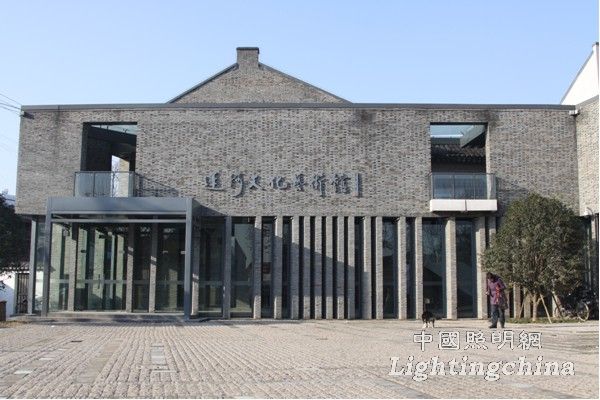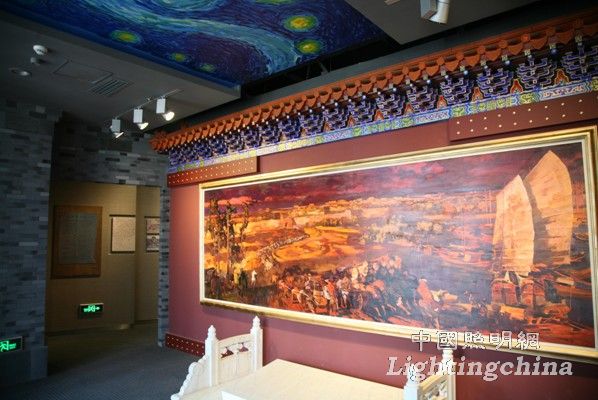Project Name: Canal Culture and Art Museum (Wuxi)
Architect: Jiang Su Aitao Culture and Arts Co. <br> lighting manufacturers: Zhongshan Lighting Co., Ltd. Eero <br> control system: Austria sharp high (TRIDONIC)
Communication is the basis of all communication and inheritance. It is important to accurately express the theme and content. The most appropriate way of choosing and creating is the purpose and means of all the work of the artist. We know a lot about the functionality of lighting, whether it is commercial space, library reading space, exhibition space lighting for most people to fully understand and master the mastery. However, the psychological debugging effect of lighting, even participation in artistic expression is rarely mentioned. We try to summarize and comb the more meaning and value of lighting by analyzing typical cases.
Our return to history relies on some of the legacy that has been fortunate in the long history of history, to provide some clues to trace the past, and historical workers find the clues as much as they can, and connect them in tandem to help future generations. The "seeing" history that can penetrate time and space is real and hard. The particularity of the museum lies in its high collection of the essence of human culture, and the formation and transmission of cultural information through various forms such as exhibition space design. The various details of its spatial function are full of the intentional expression of cultural expression. The quality of light and the way of light projection are themselves a means of language and expression.
But we must realize that there are language barriers between archaeological work and mass education. This barrier is based on both professional differences and exploration purposes. Restoring historical truth and inheriting and cherishing history and culture is not a matter of the same category. Defining the purpose of communication in the design concept of exhibition, designing the dialogue environment and creating dialogue is the core meaning of the exhibition design work. At the Canal Culture and Art Museum in Wuxi, we have seen some attempts of this kind of effort, and whether it is perfect or not, it is worthwhile for us to choose the way of exporting and expressing historical culture and let lighting become an integral part of participation. Thinking and communication.
Most of the museum exhibitions are historical cultural works, and the core is to present the typical characteristics of the era background. However, history and culture are a long river of movement. When the foundation of this culture has been lost or changed a lot, it is difficult for you to understand the historical facts generated by the complicated external environment through an isolated clue. One of the most important ways is to make this culture reappear through dramatic scenes. The design and choice of props in this scene is to use art language to choose, to create, to lead, to dialogue, so that the audience can appreciate the culture. The essence and soul, not necessarily the historical body.
The historical value of the ancient canal is not the river water, nor the paddles of the squadrons, nor the sloping embankments. It is a process of Chinese history that has been revolved around a water system. The complexity of historical events and the richness of historical scenes are not restored by a car rive that fell during the historical wheel. When any isolated replica, even the original one, may distract the event's comprehensiveness, depth and power.
It is necessary to find the most unified, pure, and at the same time expressive language means to complete such difficult communication. Thus, the language of painting became an option and assumed this responsibility. The curator designer invited the famous artists to create 71 realistic oil paintings based on different themes and different styles according to their respective understandings. Artists are the most sensitive group to history and society. They reproduce the cultural connotation of the ancient canal by understanding history, understanding history and artistic creation.
Of course, painting is only a language, and "grammar and rhetoric" is the focus of exhibition planning. It requires: the use of the distribution of painting themes to capture the most classic moments of history; the use of painting forms to generate artistic conception related to the theme; using lighting technology to accurately present The color and theme center of the picture; the use of space conversion to debug the theme transformation in the audience's thought process, these aspects are the essence of the exploration of the designers of the Canal Culture Art Museum.
Entering the art gallery, the first thing that catches the eye is the realistic canal painting of the large canal scene. The huge oil paintings have enabled the viewers to embark on a sneak peek from the impetuous reality. Here, in space, it is a node that is transformed from an external space to an internal space. Therefore, the physiological requirements of outdoor illumination and indoor illumination adaptive conversion; light color, illumination, uniform distribution, artistic requirements with time, with time; can be uniform The technical requirements for linear illumination adjustment impose harsh conditions on the luminaire. If we don't let light take on such a complicated task, we may never have such a deep understanding of the performance of the luminaire. However, it is the development of art that promotes the development of pigments and canvases, promotes the development of film-film reduction technology, and promotes people. The development of aesthetic requirements for art. Of course, the promotion of exhibition means has also been promoted here.


Space is the container of light, and light and shadow are the creators of space.